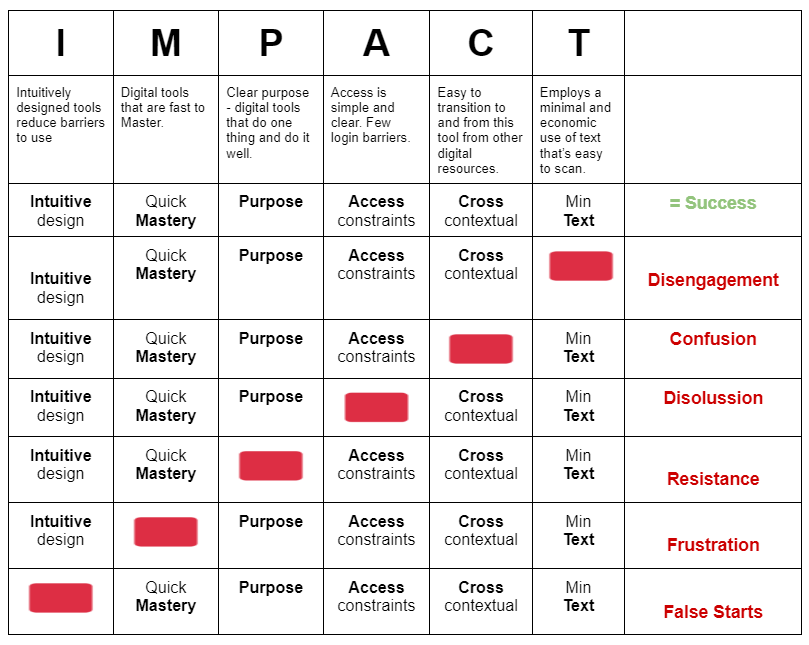One of the things I write about in Simple Tools is the notion of needing a foundational approach to teach technology in classrooms.
This isn’t just a matter of picking the right tool, for the right content, and the right pedagogical approach … though that’s a good start. It also centers around having a clear sense of what MAKES an effective resource in the classroom.
The best digital resources are often those that have a clear purpose, that can be more easily aligned with the key areas of teacher knowledge reference above, and that is swift and effective in its use with students.
The IMPACT model was developed with just this thought in mind.
What Simple Tools eludes to, but does not explicitly outline is the result when a digital resource is selected that does NOT conform to the IMPACT criteria.
While I would be the first to acknowledge that there are software products that certainly don’t apply to this methodology, for the most part, it is a sound measure for determining success in my experience.
But where else might we look to determine success? Simple Tools also outlines the ways in which you might frame language in the classroom about the who, why, where, and what of digital tools when exploring them with students.
It’s critically important that we are explicit in explaining the reasons we’re employing particular digital tools, how they are best leveraged toward learning outcomes, and why. If we are failing to articulate the reasons we’re using one digital tool over another, we are in many ways, instituting change that is poorly understood.
For this reason, I used the Knoster model for change as an inspiration in illustrating the potential impact of NOT explaining the reasons for using a digital resource. It’s a simple outline, but one that I think makes clear, some of the considerations needed.
For a more explicit explanation of how to frame a conversation in the classroom around how and why you’re employing a digital tool in a sequence of learning, refer to Simple Tools :)



